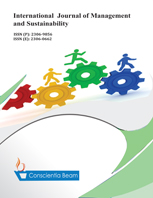Comparison between Decision Making Method for Success Right or Wrong of Software Development Project
DOI:
https://doi.org/10.18488/journal.11/2015.4.12/11.12.237.247Abstract
For a purpose of improvement of project management, we should determine the success right or wrong of project objectively and quantitatively. On the other hand, a decision of success right or wrong of software development projects has been evaluated subjectively by a questionnaire for stakeholders concerned. Furthermore, the study of definition of project success right or wrong and quantitative decision techniques is not found. Recently, gathering of the attribute data about software development projects in Japan has been performed by the IPA/SEC (Software Engineering Centre of the Information-Technology Promotion Agency Japan). Therefore, we developed the diagnostic technique to judge the success right or wrong on a project by a discriminant analysis based on the actual data of IPA/SECs in the precedent study. Also, we tried to develop the diagnostic technique of success right or wrong of project based on the “Success degree estimation mode” in this study. In this paper, we would like to propose the result of comparison between the effectiveness of these diagnostic techniques of the project.

